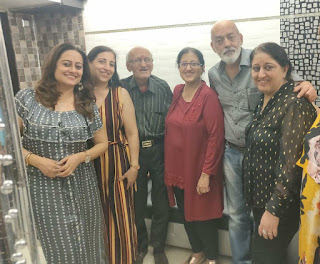Indur Manghanmal Malkani was born on 10th March 1938 in Sakhar (also known as Sukkur), Sindh, British India, the son of Manghanmal and Bhagwanti Malkani. Following Partition, Indur says the family was fortunate enough to leave early, so he did not witness any violence that others may have. Today, Indur lives in Mumbai, India but remains nostalgic for the homeland that he left behind. Indur, third from left, with his four daughters and one son Indur Manghanmal Malkani was born the eldest child in a family of four brothers and three sisters. Together with his immediate family, they lived in a joint household with his grandmother, two chachas (paternal uncles) and their families, as was the norm in those days. Indur says his family was well-off. His father, in partnership with his two brothers, were in the jewellery business. They owned a jewellery shop called Anandram Morandram Sonaro (‘sonaro’ means goldsmith). The shop was on the ground floor of a three-storey building, while the up...













